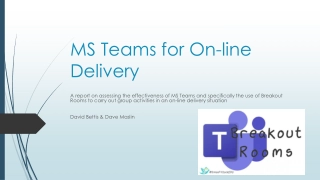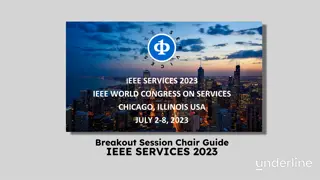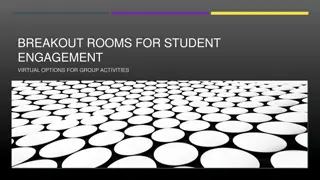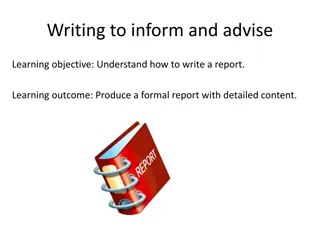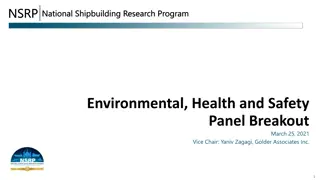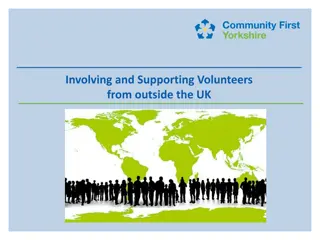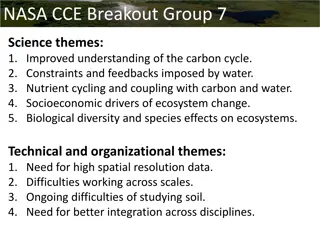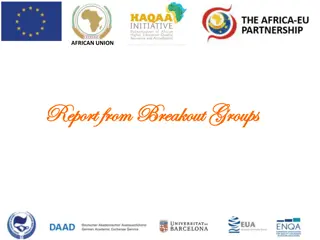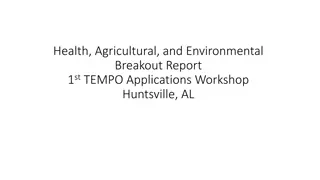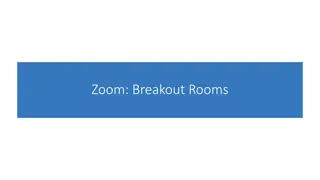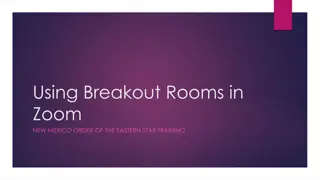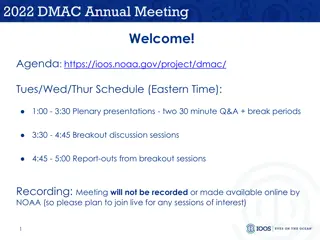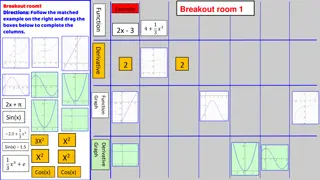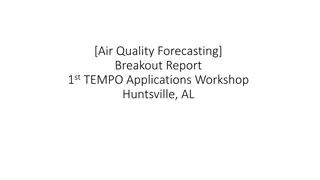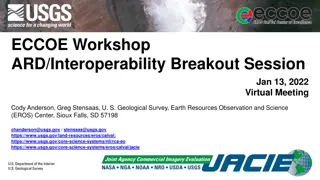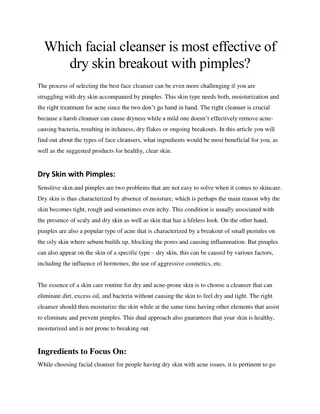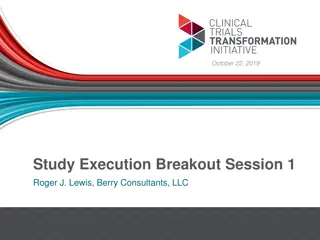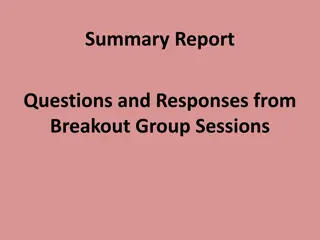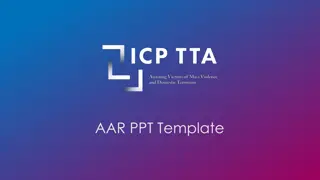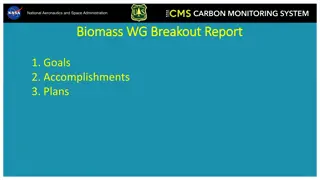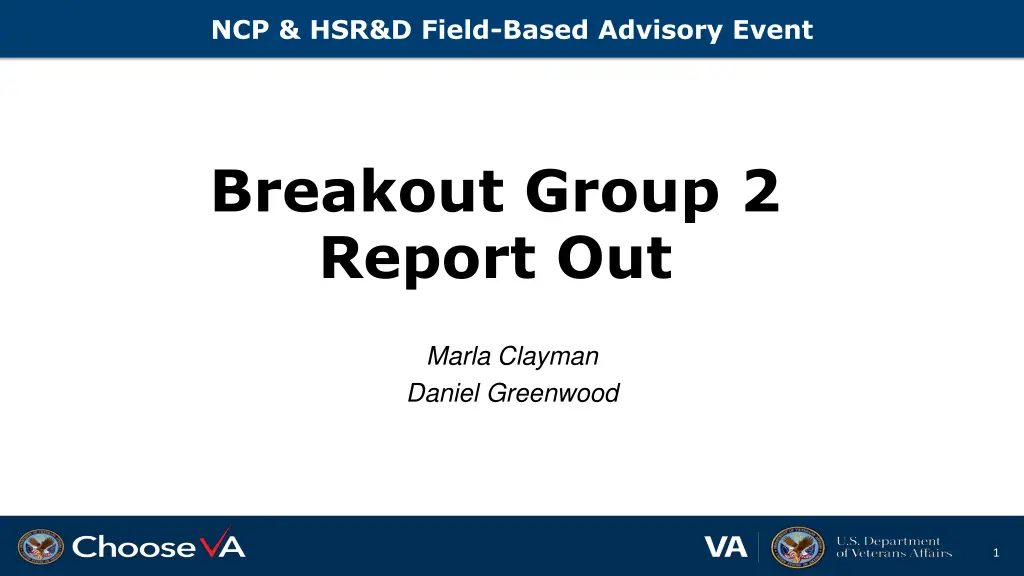
Breakout Group 2 Recommendations on Health Literacy Assessment
This report presents the recommendations of Breakout Group 2 from the NCP & HSR&D Field-Based Advisory Event on evaluating the impact of health literacy and patient education across VHA programs. The group suggests building a crosswalk for measurement, including methods to capture high-risk veterans, and assessing domains and methods for implementation feasibility.
Download Presentation

Please find below an Image/Link to download the presentation.
The content on the website is provided AS IS for your information and personal use only. It may not be sold, licensed, or shared on other websites without obtaining consent from the author. If you encounter any issues during the download, it is possible that the publisher has removed the file from their server.
You are allowed to download the files provided on this website for personal or commercial use, subject to the condition that they are used lawfully. All files are the property of their respective owners.
The content on the website is provided AS IS for your information and personal use only. It may not be sold, licensed, or shared on other websites without obtaining consent from the author.
E N D
Presentation Transcript
NCP & HSR&D Field-Based Advisory Event Breakout Group 2 Report Out Marla Clayman Daniel Greenwood 1
NCP & HSR&D Field-Based Advisory Event Evaluation of Health Literacy and Patient Education 16 November 2022 Breakout Group 2 Report Out Predecisional / For Internal VA Use Only 2
Breakout Group 2 Leads Name Program Office Marla Clayman, PhD, MPH (Research Lead) VA HSR&D CHOIR Dan Greenwood, PhD, RD (NCP Lead) National Center for Health Promotion and Disease Prevention (NCP) Michael Goldstein, MD (NCP Sponsor) National Center for Health Promotion and Disease Prevention (NCP) Jason Aaron, MD, MPH (PM/Clinical Advisor) Office of Healthcare Transformation (OHT) 3
Breakout Group 2 Members (alphabetical) Name Program Office Name Program Office Barbara Bokhour HSR&D CHOIR Ryan Heiman COO Member Services Sherry Ball* HSR&D Mary Julius Specialty Care Research Joel Bradley Hospitalist Susan Kirsh* ADAUSH DEAN Lori Carlson NCP- MOVE Dietitian Troy Knighton NCP/IDPIO Melissa Christopher* Director PBM Academic Detailing Michaela McCarthy* RN-Denver/Research Asst Kellie Condon* Connected Care Informatics Scott Pawlikowski* PC Director of I&I Danielle Danyluk Field-Based MH Director Susan Santos WRIISC Director- Risk Comms Arum Dobalian* GLAMC Director of VA Research/Emergency Mgmt Paula Schnurr Director NCPTSD Deborah Drumel* Field Dietitian Kenda Steffenmeier HSR&D / ORH Margaret Dundon NCP- Psychologist Tracy Weistreich ONS Jami Falk* PC Chief Nurse for PCMO Tamar Wyte-Lake* VA Research *attends multiple groups 4
Breakout Group 2: Productive Interactions Primary Question: Assuming patient education has occurred, what could be measured that assesses the impact of health literacy that is cross cutting across multiple VHA programs?
Recommendations Focus of Productive Interaction Measurement: 1. Build a Veteran and Clinician/Clinical Team crosswalk for measurement. 2. Include methods to measure Veterans most at risk of exclusion from measurement. 3. Consider impact and feasibility of domains and methods for implementation. Start with existing validated measures that can be cross cutting for multiple VA programs. Short term big wins! 6
Key Takeaways What should we implement? A variety of metrics and measures; both positive and negative. Include mix of survey, interviewing/observation, and documentation. Measure processes and outcomes for Veteran/patient/family AND clinician/clinical team (include all team members). Create a crosswalk. Clinician metrics can be related to already occurring Ongoing Professional Practice Evaluation. Include Training opportunities with measurement. Assess existing observation models that can be implemented. Make pre & after-visit summaries feasible partner with Academic Detailing/MyHealtheVet AVS, PVS, MIM Template, New Med Education Template, AVS and PVS on MHV, VetText Alerts about AVS, Centralize Mailing options for AVS and PVS (via national Xerox Contract) Make virtual care simpler to set-up for Veterans & feasible to improve health literacy without adding to frontline burnout. Inventory baseline equity and disparity barriers and measure over time. 7
Key Takeaways What should we continue doing? VSignals + modified questions to address health literacy. Leverage existing best practices & workflows in MOVE!, Whole Health, Peer Support Start with internally validated metrics that perform well across generalizable populations and that are perceived to be feasible at the frontline Don t wait upon Cerner for shorter-term goals (<2 years) What are the identified gaps where further research is needed? Feasible observational studies 8
DRAFT Productive Interaction SMART Goals assess information-sharing, comprehension of interactions, and self- efficacy for following through on clinical recommendations to measure the health literacy of Veterans across VA programs. Build upon strong practices from MOVE, OPCC, etc. Digital Divide consults may be a source to find the difficult to reach populations, so outreach to that program. Year 1: PCL & VEO should leverage VSignals with refined questions to teams application of health literacy to achieve a baseline state of the current practice of VA staff. Year 2: PCL should design a valid study (A3 analysis) of frontline care in the year 2 current state analysis in order to improve the health literacy of Veterans across all educational & care programs. Year 3: PCL should provide SMART goals for addressing the gaps identified 9
Future Potential Priorities and Areas of Discussion Staff burden/burnout Methods for Scope, Implementation, Execution, & Spread Methods for high reliability and roll down Specificity of programs vs ALL interactions Time to match interventions to outcomes Concern with the stability of Cerner Complexity of programs Complexity of measurement techniques Technology literacy of Veterans Effective methods to the populations that will benefit the most are also the hardest to reach Effective coordination with breakout groups 1 & 3 10

